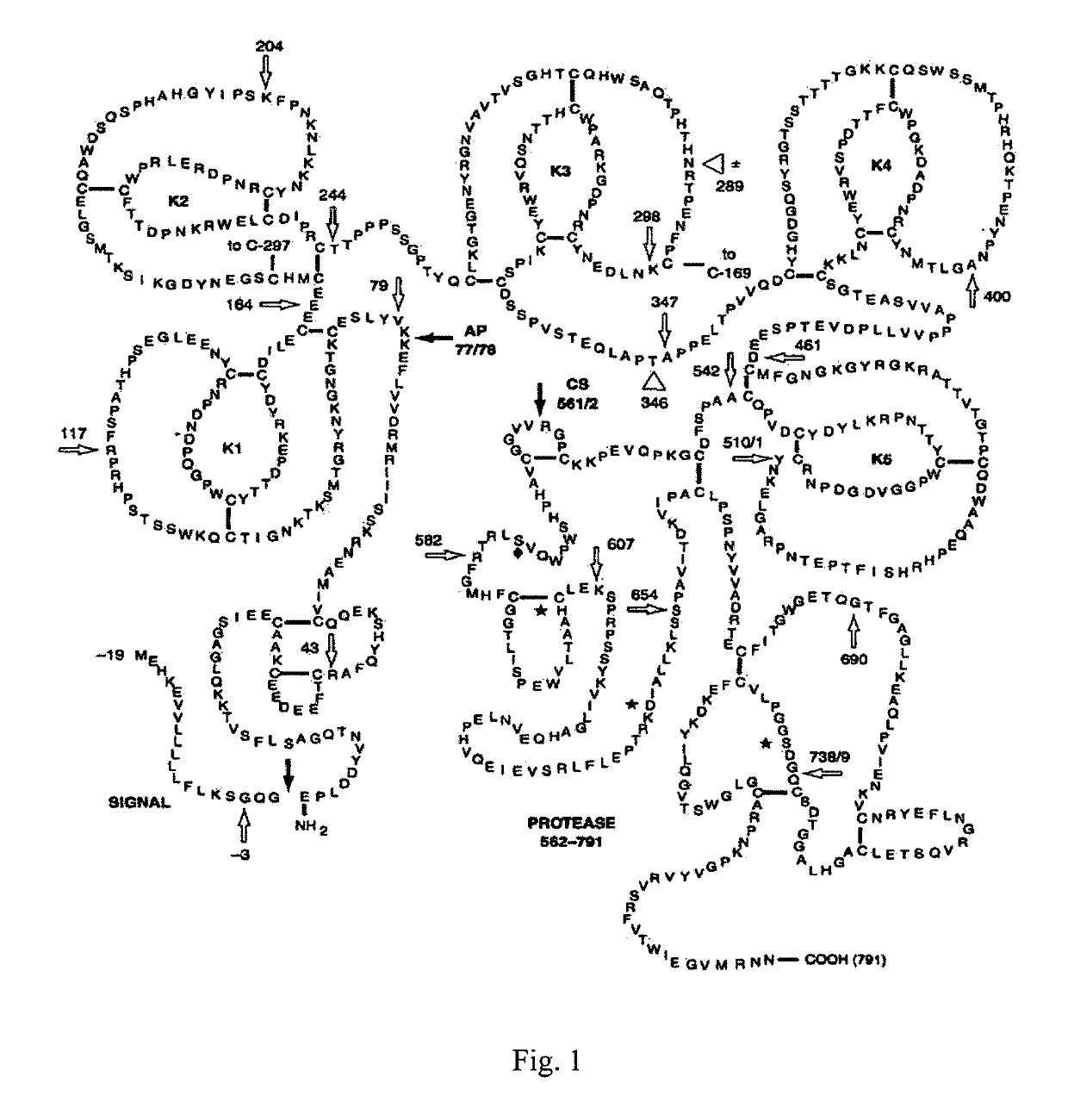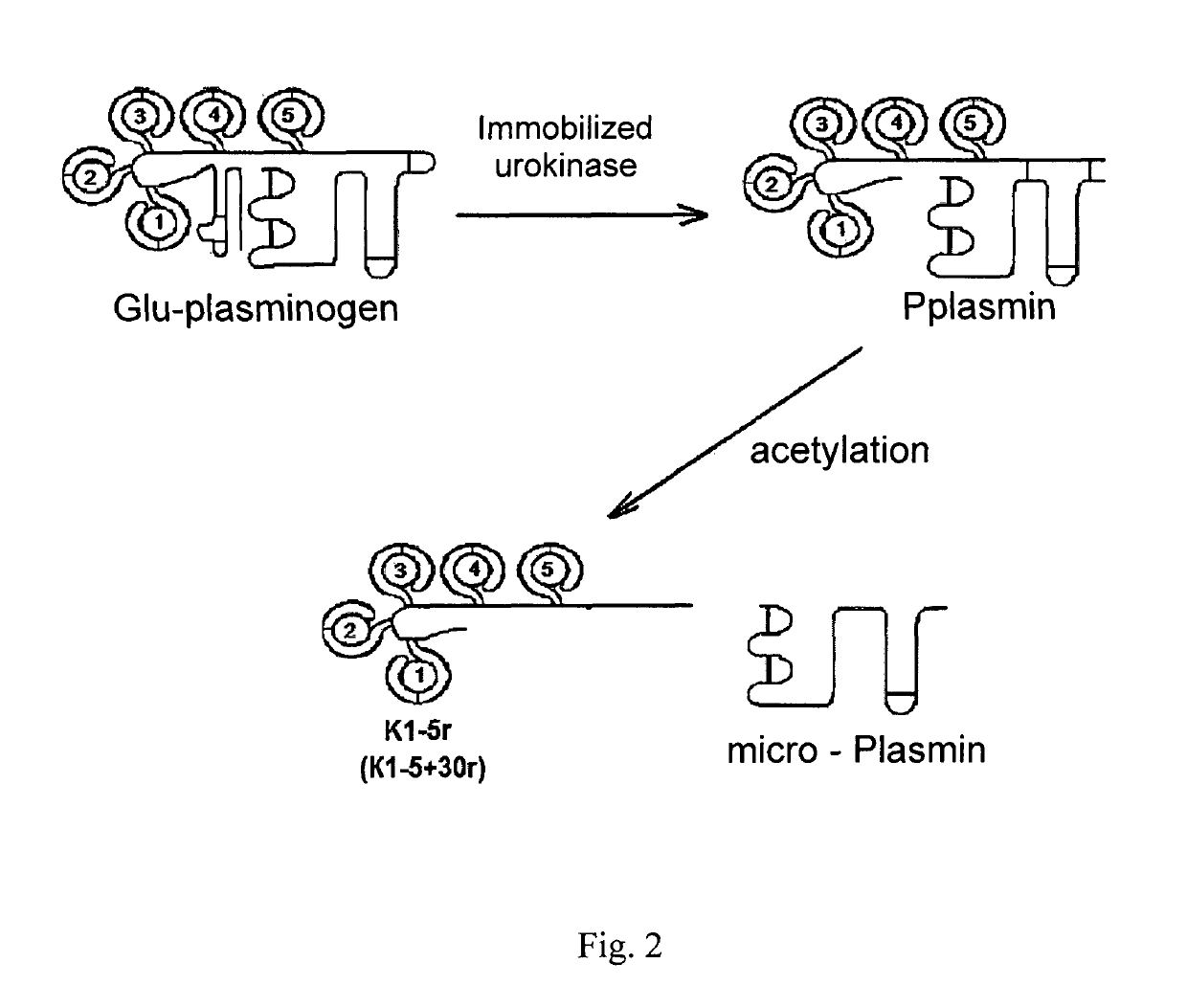Method of detection of proteolysis products in plasma and a diagnostic system for its application
a proteolysis product and plasma technology, applied in the field of medicine and immunology, can solve the problems of no reports in the published literature of using the proposed organic solvent in incubation buffers
- Summary
- Abstract
- Description
- Claims
- Application Information
AI Technical Summary
Benefits of technology
Problems solved by technology
Method used
Image
Examples
example 1
Identification of the Binding of IgG and IgA with a C-Terminal Lysine in Prostate Cancer Using Direct ELISA.
[0091]Diagnoses of patients with prostate cancer were established on the basis of the following parameters: clinical examination and confirmation by prostate biopsy. The group consisted of 5 patients with prostate cancer.
[0092]ELISA of samples from prostate cancer patients and a control sample was performed according to the method described above. The samples where the optical density exceeded the control by more than 30% were considered positive.
[0093]Results:
[0094]Using the following sequences as the ligand: SEQ ID NO1, SEQ ID NO2, SEQ ID NO3, SEQ ID NO4, SEQ ID NO6, SEQ ID NO9, SEQ ID NO10, SEQ ID NO11, SEQ ID NO12, SEQ ID NO13, in an ELISA, only 2 out of 5 samples from prostate cancer patients were positive for IgG and IgA when using an incubation buffer without the proposed components listed in Table 2. The dilution of samples in this case was 1:100. By contrast, when usi...
example 2
Identification of the Binding of IgG and IgA with a C-Terminal Lysine in Prostate Cancer Using Inverse ELISA.
[0096]Diagnoses of patients with prostate cancer were established on the basis of the following parameters: clinical examination and confirmation by prostate biopsy. The group consisted of 5 patients with prostate cancer.
[0097]ELISA of samples from prostate cancer patients and a control sample was performed according to the method described above. The samples where the optical density exceeded that of the control sample by more than 30% were considered positive.
[0098]Results:
[0099]Using the following biotinylated sequences as a detector: SEQ ID NO1, SEQ ID NO2, SEQ ID NO3, SEQ ID NO4, SEQ ID NO6, SEQ ID NO9, SEQ ID NO10, SEQ ID NO11, SEQ ID NO12, SEQ ID NO13 in an ELISA, only 2 out of 5 samples from prostate cancer patients were positive for IgG and IgA using an incubation buffer without the proposed components listed in Table 2. The dilution of samples in this case was 1:100...
PUM
| Property | Measurement | Unit |
|---|---|---|
| pH | aaaaa | aaaaa |
| concentration | aaaaa | aaaaa |
| pH | aaaaa | aaaaa |
Abstract
Description
Claims
Application Information
 Login to View More
Login to View More - R&D
- Intellectual Property
- Life Sciences
- Materials
- Tech Scout
- Unparalleled Data Quality
- Higher Quality Content
- 60% Fewer Hallucinations
Browse by: Latest US Patents, China's latest patents, Technical Efficacy Thesaurus, Application Domain, Technology Topic, Popular Technical Reports.
© 2025 PatSnap. All rights reserved.Legal|Privacy policy|Modern Slavery Act Transparency Statement|Sitemap|About US| Contact US: help@patsnap.com


